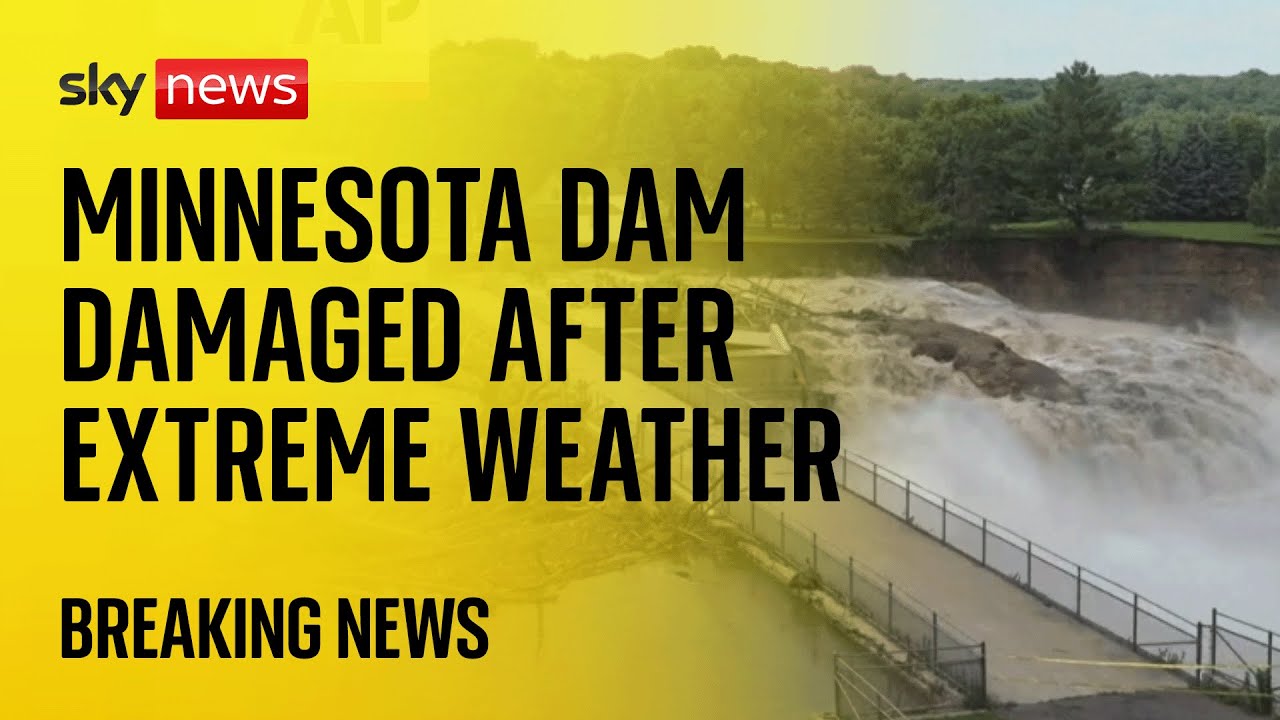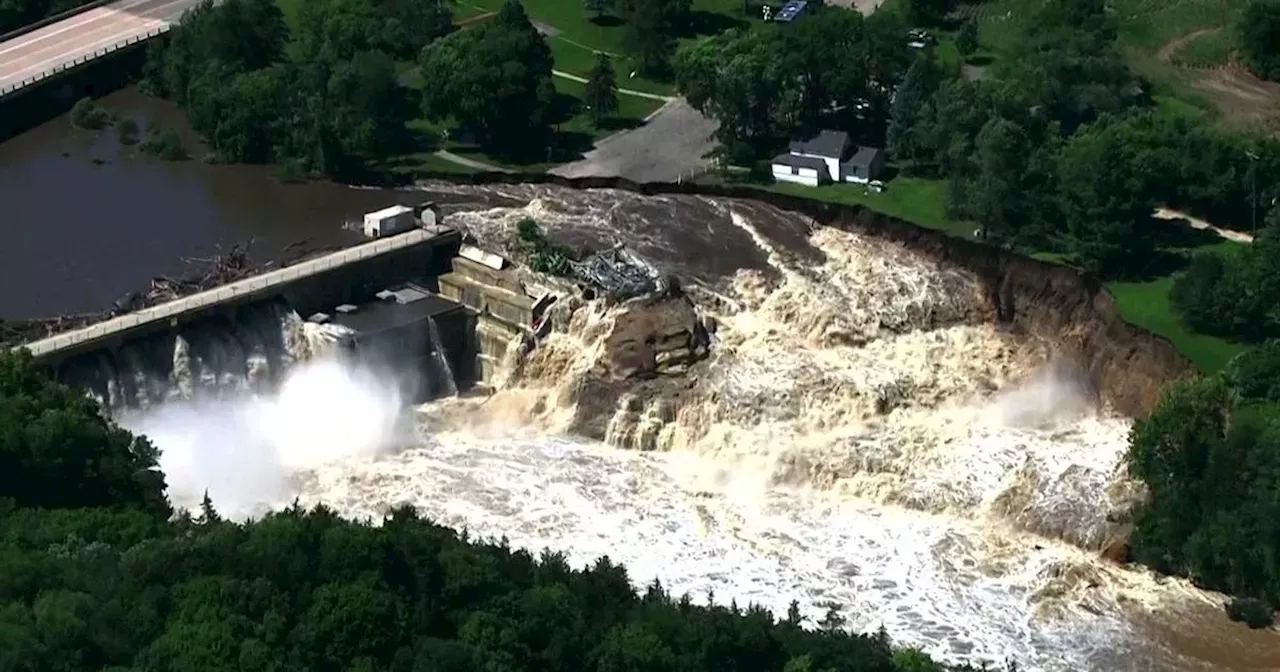Rapidan Dam Flooding Impact
The Rapidan Dam flooding has had a devastating impact on the surrounding environment. The floodwaters have inundated homes, businesses, and farmland, displacing thousands of people and causing widespread damage.
The incessant rainfall has caused the Rapidan Dam to overflow, threatening communities downstream. The impact of the flooding is particularly severe in Blue Earth County , where several homes and businesses have been inundated. The rising waters have forced residents to evacuate, and emergency responders are working tirelessly to rescue those trapped in the floodwaters.
The Rapidan Dam flooding is a reminder of the devastating consequences of extreme weather events, and it underscores the need for robust infrastructure and emergency preparedness.
Extent of Flooding
The flooding has affected an area of over 100 square miles, with water levels reaching as high as 20 feet in some areas. The floodwaters have destroyed bridges, roads, and other infrastructure, making it difficult for residents to access essential services.
The Rapidan Dam, a formidable structure that once held back the relentless waters of the Minnesota River , succumbed to the relentless onslaught of a torrential downpour, unleashing a devastating flood that reshaped the landscape and left an indelible mark on the surrounding communities.
As the floodwaters receded, revealing the extent of the destruction, the Rapidan Dam stood as a somber reminder of the indomitable power of nature.
Impact on Local Communities
The flooding has had a devastating impact on local communities. Thousands of people have been displaced from their homes, and many have lost their livelihoods. The floodwaters have also contaminated drinking water supplies, posing a serious health risk to residents.
Potential Long-Term Consequences
The flooding is likely to have long-term consequences for the surrounding environment. The floodwaters have deposited sediment and debris in waterways, which could lead to increased flooding in the future. The flooding has also damaged wetlands and other sensitive ecosystems, which could have a negative impact on wildlife.
Rapidan Dam Flood Control Measures: Rapidan Dam Flooding

The Rapidan Dam, a vital component of Virginia’s water management system, has implemented comprehensive flood control measures to safeguard the surrounding communities from potential flooding.
At the heart of these measures lies the dam’s design, which incorporates a massive concrete structure equipped with a series of gates. These gates can be precisely controlled to regulate the flow of water through the dam, allowing for the controlled release of excess water during heavy rainfall events.
Effectiveness of Flood Control Measures
The effectiveness of these flood control measures has been demonstrated on numerous occasions. During the devastating floods of 2018, the Rapidan Dam successfully prevented catastrophic flooding downstream, protecting thousands of homes and businesses.
The controlled release of water through the dam’s gates allowed for the gradual discharge of excess water, mitigating the risk of sudden and overwhelming floods. This measured approach minimized the impact on downstream communities while ensuring the safety of the dam itself.
Areas for Improvement, Rapidan dam flooding
While the Rapidan Dam’s flood control measures have proven effective, there is always room for improvement. Ongoing studies and evaluations aim to identify areas where enhancements can be made to further enhance flood protection.
- Early warning systems: Exploring advanced technologies for early detection and prediction of flooding events can provide valuable time for evacuation and preparation.
- Upstream watershed management: Collaborating with stakeholders upstream to implement measures that reduce runoff and erosion can mitigate the volume of water entering the reservoir.
- Dam infrastructure upgrades: Periodic assessments and upgrades to the dam’s infrastructure, including gates, spillways, and monitoring systems, ensure its continued integrity and reliability.
Rapidan Dam Flood Warning System

The Rapidan Dam is equipped with a sophisticated flood warning system that plays a crucial role in ensuring the safety of downstream communities. This system is designed to provide early warnings of potential flooding, allowing ample time for evacuation and mitigation measures to be implemented.
The warning system operates through a network of sensors and monitoring devices that continuously track water levels, rainfall, and other relevant data. These sensors are strategically placed both upstream and downstream of the dam, providing a comprehensive view of the hydrological conditions in the surrounding area.
Data Analysis and Interpretation
The data collected by the sensors is transmitted to a central monitoring facility, where it is analyzed by a team of hydrologists and engineers. These experts use advanced computer models to forecast potential flooding scenarios and determine the likelihood of dam failure. The models take into account various factors, including the volume of water stored in the reservoir, the rate of inflow and outflow, and the condition of the dam structure.
Early Warning Issuance
If the analysis indicates a high risk of flooding, the flood warning system will automatically issue an alert. These alerts are communicated to local authorities, emergency responders, and the general public through multiple channels, including sirens, text messages, and social media. The warnings provide detailed information about the potential flood threat, including the estimated time of arrival, the affected areas, and the recommended evacuation routes.
Effectiveness and Improvements
The Rapidan Dam flood warning system has proven to be highly effective in providing early warnings of potential flooding. The system has helped to prevent numerous disasters and has saved countless lives. However, there is always room for improvement.
One area where the system can be enhanced is through the use of more advanced sensors and monitoring technologies. These technologies can provide more accurate and real-time data, allowing for more precise flood forecasting and earlier warning issuance.
Another area for improvement is the integration of the flood warning system with other emergency response systems. This would allow for a more coordinated and efficient response to flooding events, ensuring that resources are allocated effectively and assistance reaches those in need as quickly as possible.
The Rapidan Dam flooding, a harrowing reminder of the fragility of our infrastructure, echoes the devastating consequences of dam failure in Minnesota. The torrent of water that once surged through the Rapidan Valley parallels the catastrophic destruction witnessed in Minnesota, highlighting the urgent need for proactive measures to safeguard our communities from such disasters.
The torrential rains that have battered the region have taken their toll on the Rapidan Dam, leading to concerns about flooding downstream. The dam’s operators are monitoring the situation closely and have implemented measures to mitigate potential risks. For the latest updates on the rapidan dam flooding , please visit the official website.
The incessant downpour relentlessly pounded the Rapidan Dam, threatening to unleash its torrential wrath upon the unsuspecting towns downstream. Yet, amidst the impending catastrophe, a beacon of hope flickered in the distance. The quaint town of Blue Earth, Minnesota , stood as a testament to the resilience of the human spirit, having weathered similar storms in the past.
Its indomitable spirit served as a reminder that even in the face of adversity, hope can prevail.